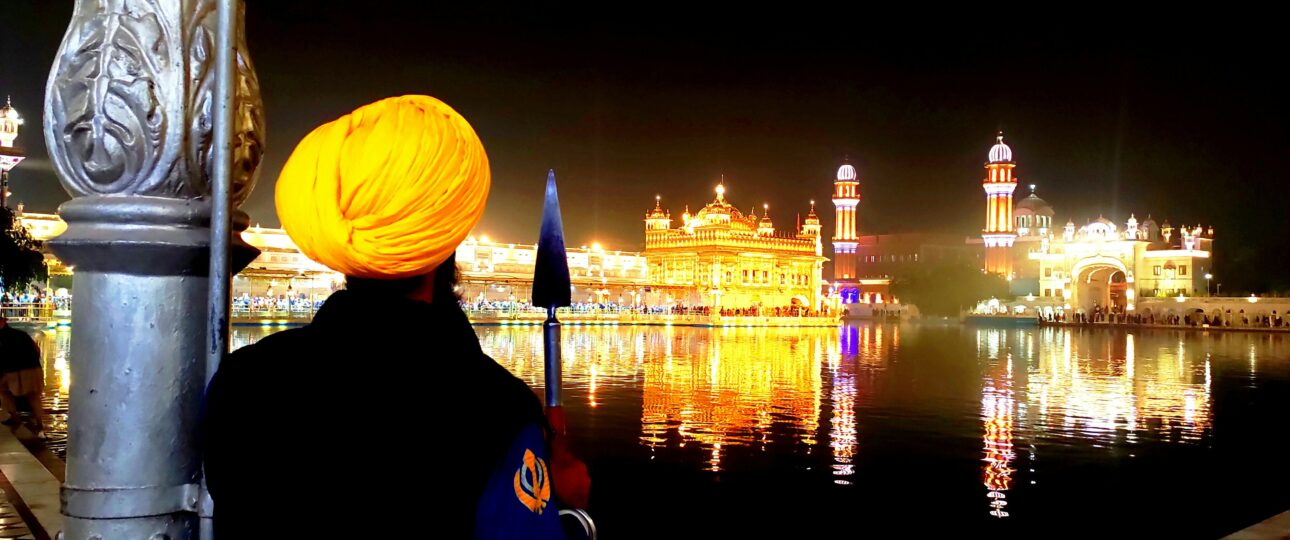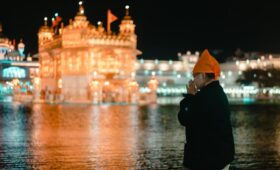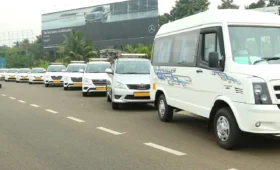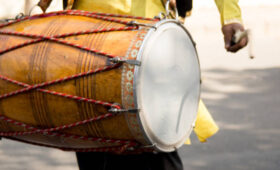Amritsar is one of India’s most culturally rich cities, located in the northwestern state of Punjab. It’s a city that blends history, religion, and vibrant traditions seamlessly. Known for being the spiritual center of the Sikh religion, Amritsar is home to the magnificent Golden Temple, which draws visitors from all over the world. The city has also witnessed some of the most pivotal moments in Indian history, making it a must-visit destination.
The city is a perfect blend of old and new, where you can experience the serenity of the Golden Temple and the lively atmosphere of the local markets. Whether you’re interested in history, spirituality, or just want to explore a vibrant culture, Amritsar has something to offer.
Table of Contents
Overview of Amritsar’s Climate. 1
Monsoon (July to September): 1
Best Time to Visit Amritsar. 1
Festivals and Events in Amritsar. 1
Key Attractions in Amritsar. 1
Health and Safety Precautions. 1
Overview of Amritsar’s Climate

Amritsar experiences a typical North Indian climate, which means it has distinct seasons: winter, summer, and monsoon. Understanding the weather patterns of the city is crucial for planning your visit.
Winter (October to March): Winters in Amritsar are cold, with temperatures ranging from 5°C to 20°C. The weather is generally pleasant, making it the peak tourist season.
Summer (April to June): Summers are hot and dry, with temperatures soaring up to 45°C. This season is less crowded, but the heat can be intense.
Monsoon (July to September): The city receives moderate rainfall during the monsoon season. The weather becomes humid, and the temperature cools down slightly.
Best Time to Visit Amritsar
Winter (October to March)
Weather: Winter is undoubtedly the best time to visit Amritsar. The weather is cool and pleasant, making it ideal for sightseeing and outdoor activities. Mornings can be misty, but the afternoons are usually sunny, with clear blue skies.
Visiting the Golden Temple during this time is a surreal experience. The cool weather makes it comfortable to explore the complex and enjoy the serenity of the surroundings.
Baisakhi Festival: Celebrated in April, this festival marks the Sikh New Year and is one of the most significant events in Amritsar. The city comes alive with processions, traditional dances, and prayers.
The winter months are perfect for witnessing the famous Wagah Border ceremony. The cool weather makes the experience even more enjoyable.
Pros: Pleasant weather, ideal for sightseeing, vibrant festivals, fewer chances of rain.
Cons: Crowded tourist spots
Summer (April to June)
Weather: Summers in Amritsar are hot and dry, with temperatures often exceeding 40°C. The scorching heat can make outdoor activities challenging, especially during the afternoon. If you plan to visit in summer, it’s best to explore the city in the early morning or late evening when the temperature is more manageable. Despite the heat, Amritsar’s markets are bustling with activity. It’s a good time to shop for traditional Punjabi attire and handicrafts. The city sees fewer tourists during this time, which means you can explore popular sites like the Golden Temple with fewer crowds.
Pros: Less crowded, lower accommodation prices.
Cons: Extremely hot weather, limited outdoor activities during the day.
Monsoon (July to September)
The monsoon season brings moderate rainfall to Amritsar, cooling down the temperature but also increasing the humidity levels. The city’s landscape becomes lush and green, offering a different kind of charm. The monsoon season gives the Golden Temple a serene and reflective ambiance, especially during early mornings and evenings. While heavy rains can disrupt outdoor plans, indoor attractions like the Partition Museum can be a good alternative. Like summer, the monsoon season also sees fewer tourists, so you can enjoy a more peaceful visit.
Pros: Cooler temperatures, lush green landscapes, fewer tourists.
Cons: High humidity, possible disruptions due to rain.
Festivals and Events in Amritsar
Amritsar is a city that thrives on its vibrant festivals and cultural events. Each season brings its own set of celebrations that add a unique charm to the city.
Diwali
Diwali, the festival of lights, is celebrated with great enthusiasm in Amritsar. The entire city, especially the Golden Temple, is beautifully illuminated. The atmosphere is filled with joy, and the night sky is lit with fireworks.
Baisakhi
Baisakhi is one of the most important festivals in Amritsar. Celebrated in April, it marks the beginning of the harvest season and the Sikh New Year. The city hosts grand processions, traditional dances, and community feasts during this time.
Guru Nanak Gurpurab
This festival celebrates the birth of Guru Nanak, the founder of Sikhism. The Golden Temple is adorned with lights, and the city witnesses large gatherings of devotees who participate in prayers and community services.
Lohri
Lohri is a traditional Punjabi festival celebrated in January, marking the end of winter. It’s a time for singing, dancing, and enjoying bonfires. The festival reflects the rich cultural heritage of Punjab.
Key Attractions in Amritsar
Golden Temple
The Golden Temple, or Harmandir Sahib, is the most significant spiritual site in Amritsar. It’s open to visitors throughout the year, but the experience varies with the seasons. During winter, the temple’s reflection on the holy Sarovar (lake) is particularly stunning. In the monsoon, the temple’s golden façade shines even more brightly against the cloudy sky.
Jallianwala Bagh
This historical garden is a memorial to the victims of the Jallianwala Bagh massacre in 1919. The winter months are ideal for visiting this site, as the weather allows for a more comfortable and reflective experience.

Wagah Border Ceremony
The Wagah Border Ceremony is a daily military practice that takes place at the India-Pakistan border. The ceremony is a must-see, and the best time to witness it is during the cooler months of winter when the crowds are more manageable.
Local Markets
Amritsar’s markets are a shopper’s paradise, offering everything from traditional Punjabi attire to local handicrafts. Each season has its own shopping appeal—winter for woolen shawls, summer for cotton fabrics, and monsoon for unique rain-themed items.
Travel Tips for Amritsar

Planning your trip to Amritsar requires considering various factors like weather, festivals, and accommodation. Here are some tips to help you make the most of your visit.
Winter: Warm clothing, especially for early mornings and nights. Don’t forget a good pair of shoes for walking around the city.
Summer: Light, breathable clothing, sunglasses, sunscreen, and a hat to protect against the sun.
Monsoon: Waterproof footwear, an umbrella, and light clothing that dries quickly.
Accommodation Tips
Winter: Book your accommodation in advance as it’s the peak tourist season. Opt for hotels near the Golden Temple for easy access to the city’s main attractions.
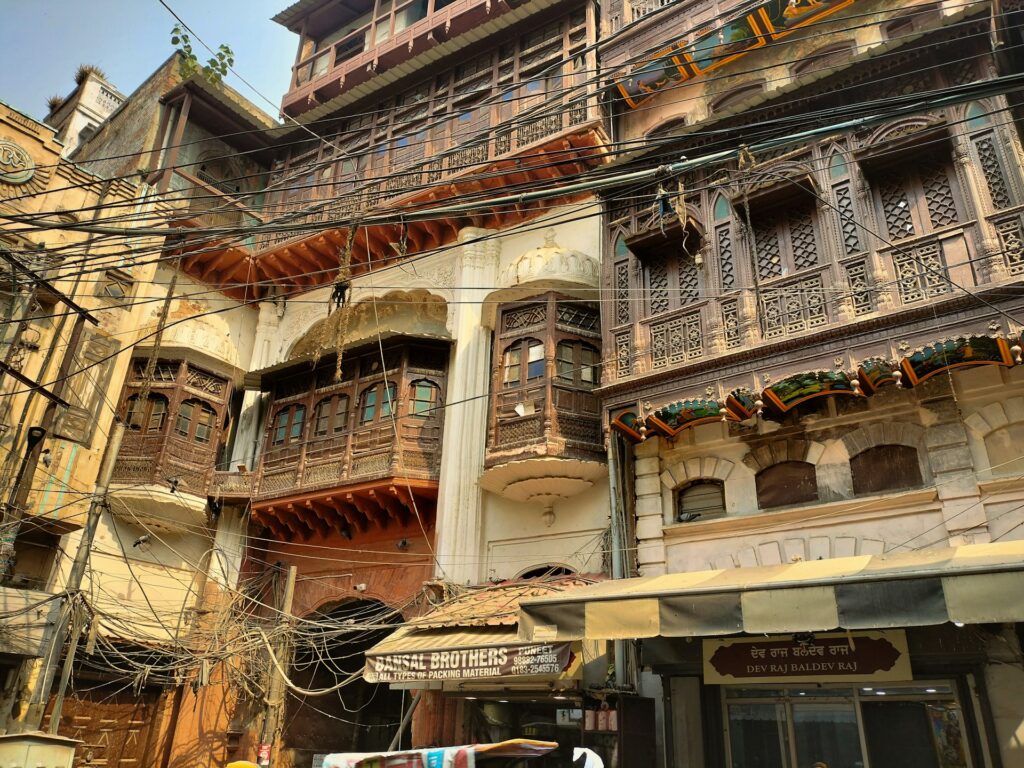
Summer and Monsoon: You can find good deals on hotels during these off-peak seasons. Consider staying in a hotel with air conditioning to escape the heat or humidity.
Health and Safety Precautions
Stay hydrated, especially during the summer months.
Avoid street food in the monsoon season to prevent stomach issues.
Keep your belongings safe in crowded areas like
